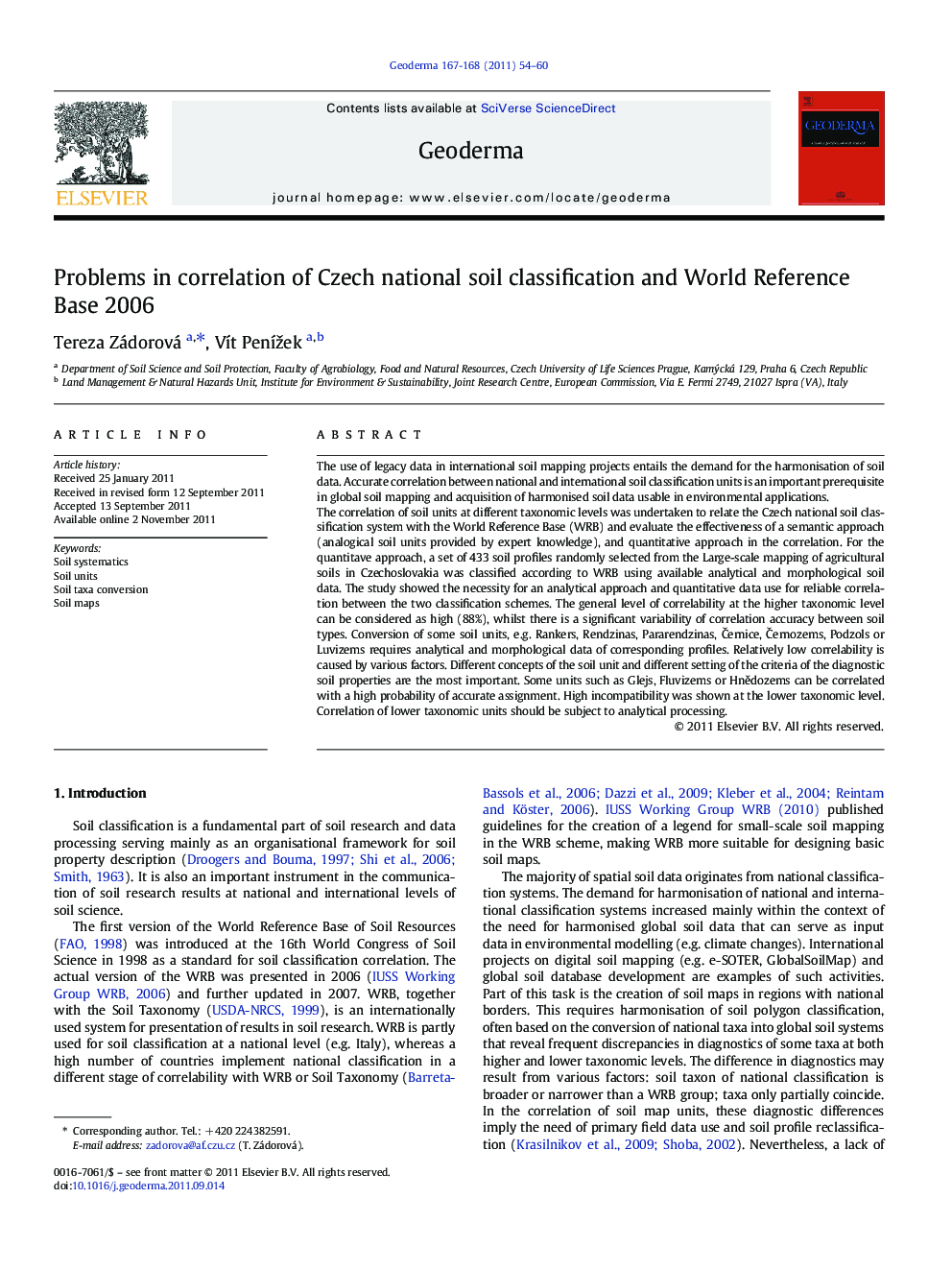| Article ID | Journal | Published Year | Pages | File Type |
|---|---|---|---|---|
| 4574016 | Geoderma | 2011 | 7 Pages |
The use of legacy data in international soil mapping projects entails the demand for the harmonisation of soil data. Accurate correlation between national and international soil classification units is an important prerequisite in global soil mapping and acquisition of harmonised soil data usable in environmental applications.The correlation of soil units at different taxonomic levels was undertaken to relate the Czech national soil classification system with the World Reference Base (WRB) and evaluate the effectiveness of a semantic approach (analogical soil units provided by expert knowledge), and quantitative approach in the correlation. For the quantitave approach, a set of 433 soil profiles randomly selected from the Large-scale mapping of agricultural soils in Czechoslovakia was classified according to WRB using available analytical and morphological soil data. The study showed the necessity for an analytical approach and quantitative data use for reliable correlation between the two classification schemes. The general level of correlability at the higher taxonomic level can be considered as high (88%), whilst there is a significant variability of correlation accuracy between soil types. Conversion of some soil units, e.g. Rankers, Rendzinas, Pararendzinas, Černice, Černozems, Podzols or Luvizems requires analytical and morphological data of corresponding profiles. Relatively low correlability is caused by various factors. Different concepts of the soil unit and different setting of the criteria of the diagnostic soil properties are the most important. Some units such as Glejs, Fluvizems or Hnědozems can be correlated with a high probability of accurate assignment. High incompatibility was shown at the lower taxonomic level. Correlation of lower taxonomic units should be subject to analytical processing.
► Correlation of national classification is necessary for global use of legacy data. ► Correlability varies significantly amongst different soil units. ► Use of quantitative analytical data is necessary in soil data harmonisation.
